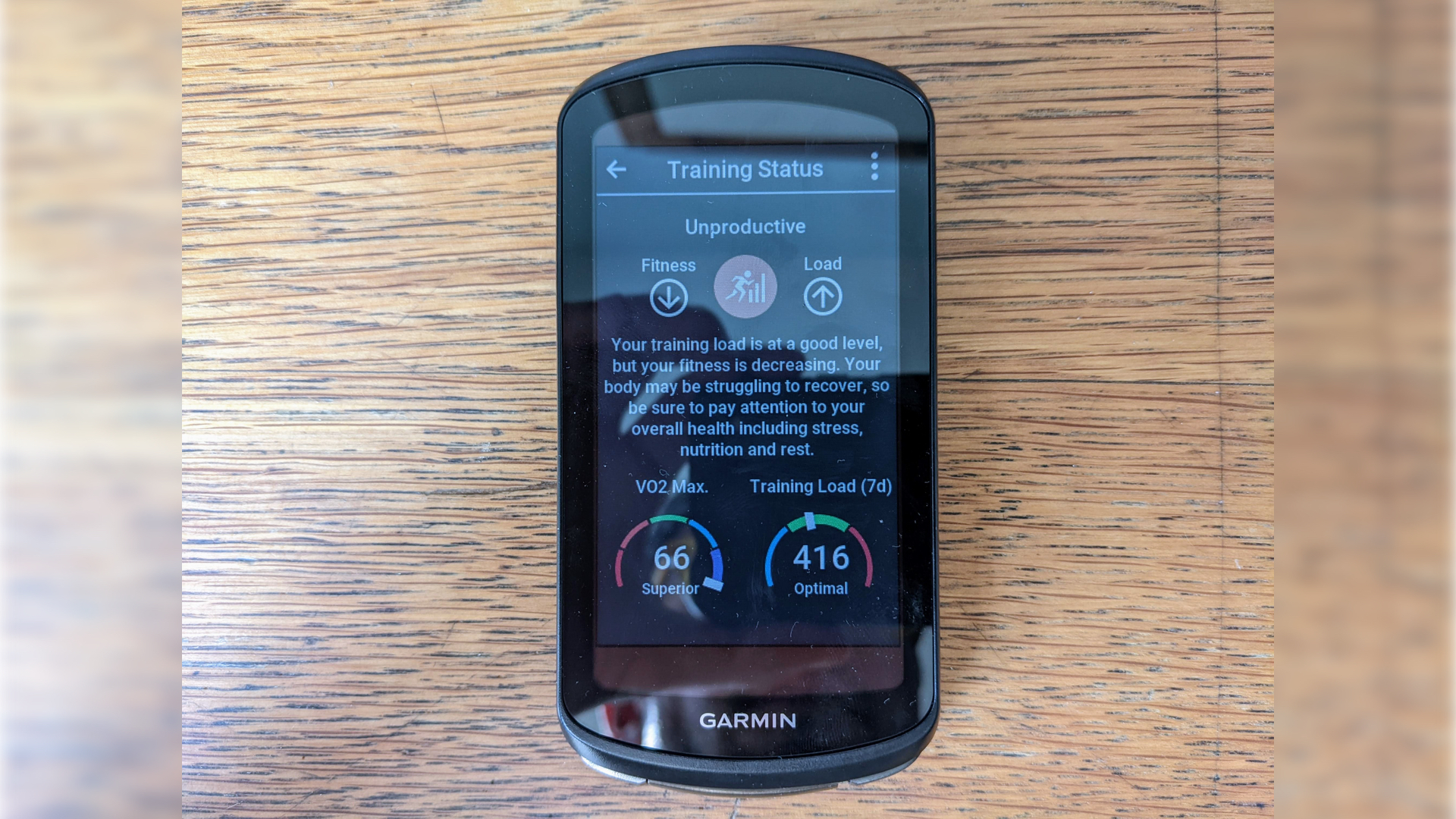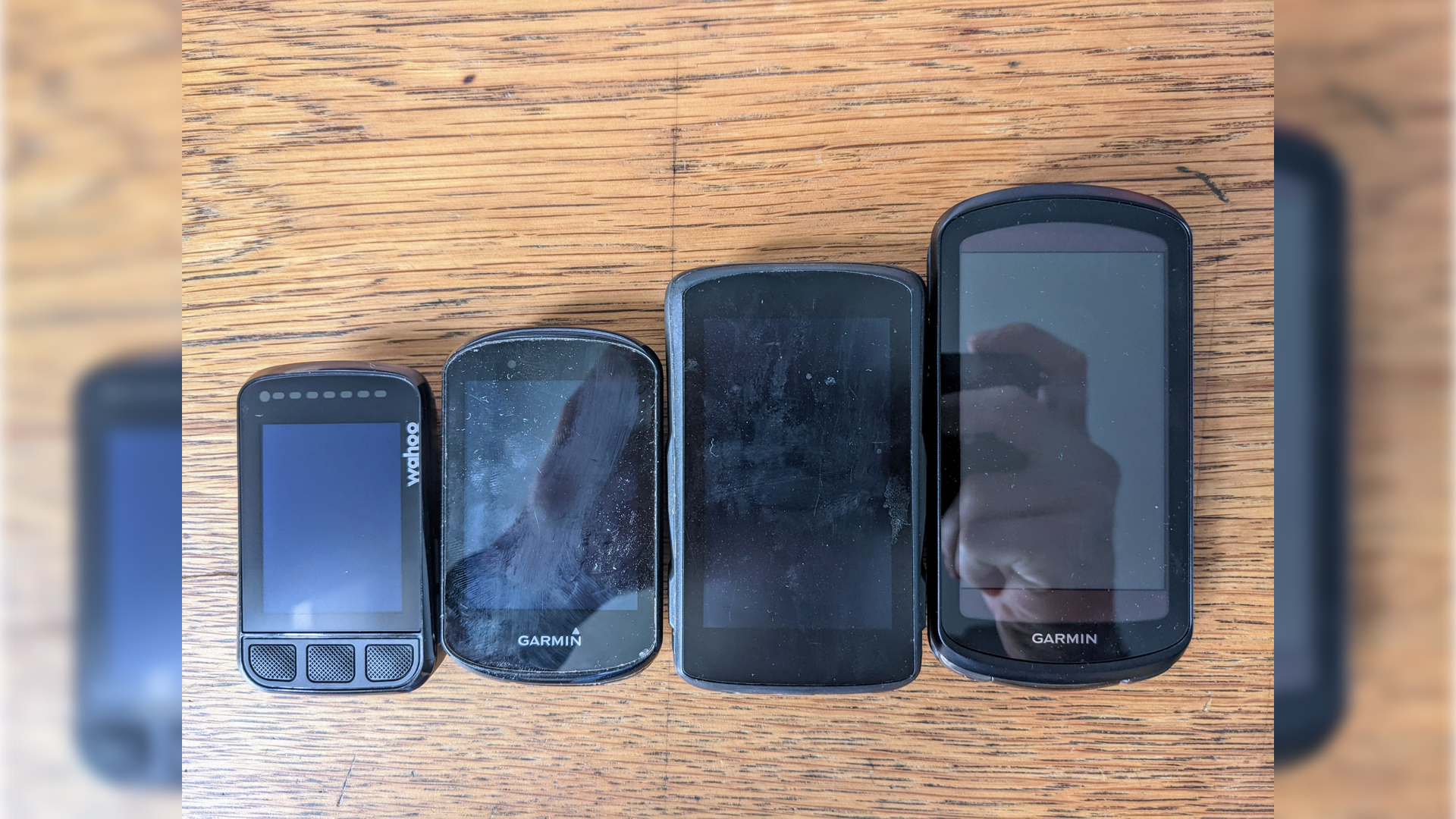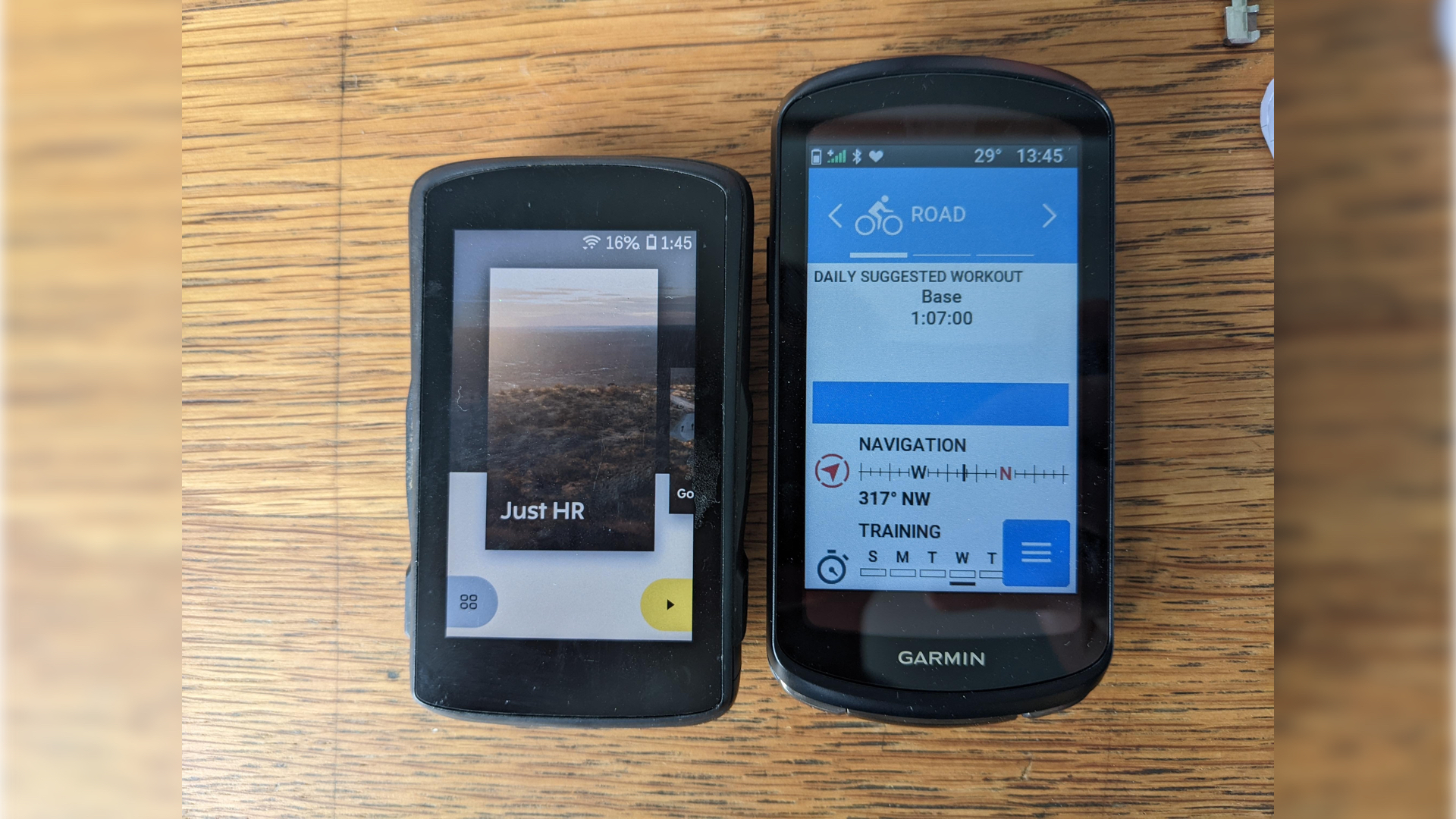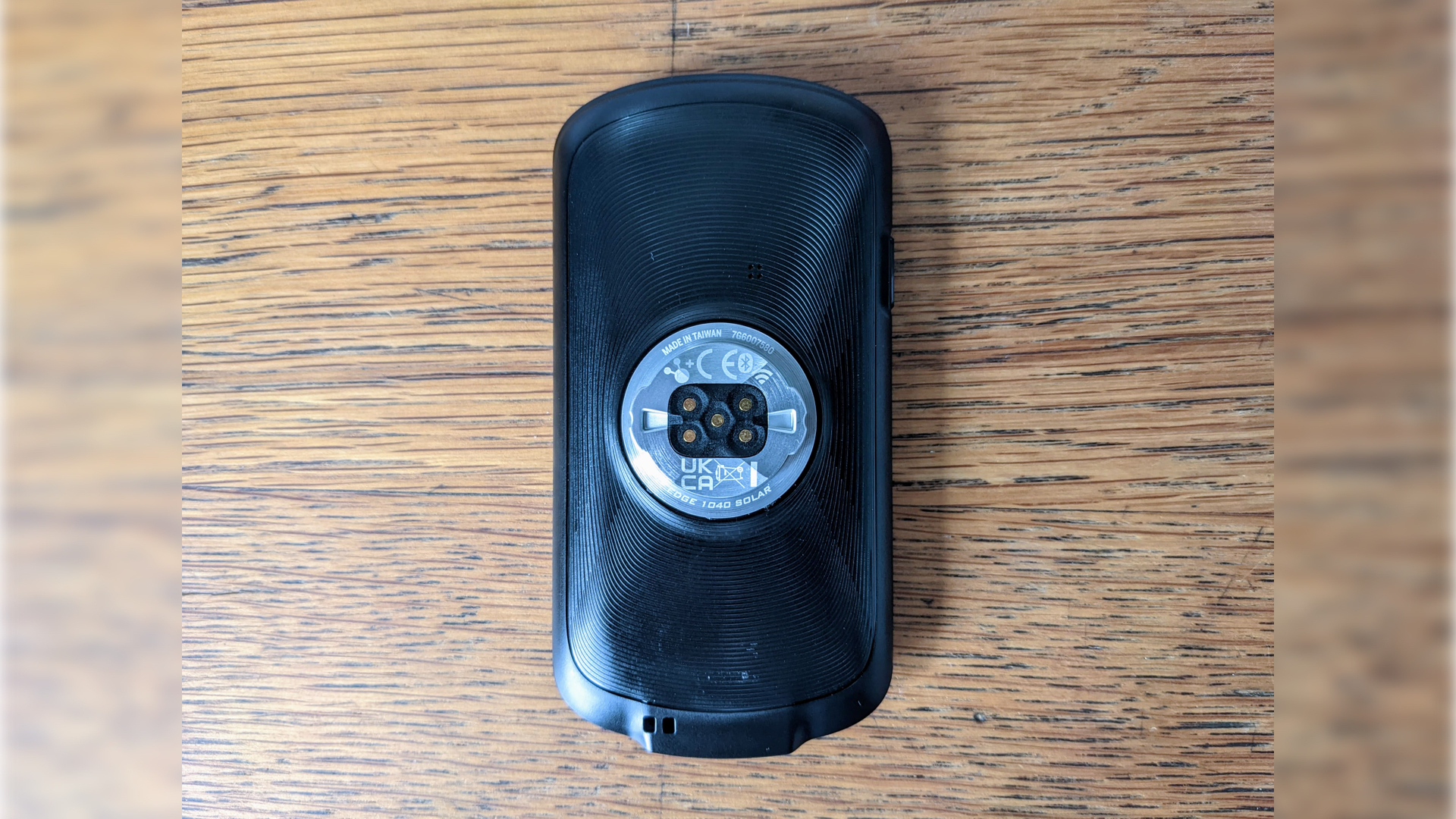I used the Garmin Edge 1040 Solar GPS bike computer for two weeks – here is my verdict
Garmin's premium Edge 1040 Solar is head and shoulders above its competition – both in terms of size and price

As the first head unit ever to include solar recharging, the Garmin Edge 1040 Solar is an excellent option for multi-day epics or simply guaranteeing you’ll rarely run out of juice. It's also a welcome upgrade to the brand’s previous flagship model, the Edge 1030 Plus.
-
+
Amazing training features
-
+
Solar feature adds amazing battery life
-
+
Great maps and navigation
-
-
One of the most expensive head units on the market, with many similarly capable cycling computers available for cheaper
-
-
The bulky design won't make you too aero
Why you can trust T3

Garmin Edge 1040 Solar review TL;DR: Garmin’s latest top-of-the-range GPS cycling computer does everything you’d ever need from a head unit (and more) and is easily one of the top cycling computers we’ve ever tested – and it has an eye-watering price tag to match!
The Edge 1040 Solar is an evolution rather than a revolution over the Garmin Edge 1030 Plus it replaces as the brand’s best cycling computer, but there are welcome tweaks both on the surface and under the hood. Should you invest in this rather pricey head unit, or are you better off using something cheaper? Read my full Garmin Edge 1040 Solar review below to find out.
Garmin Edge 1040 Solar review: Price and availability
The Garmin Edge 1040 Solar was released in June 2022 and is available to buy now from Garmin UK, Garmin US and Garmin AU for a recommended retail price of £629.99/$749.99/AU$1,299.
The non-solar edition of the Garmin Edge 1040 is available for cheaper, 'only' £519.99/$599.99/AU$999. This version has the same features as the Solar model, but the battery life is less mind-blowing (although still pretty decent at 35 hours).
Interestingly, this is version is the same price as the Edge 1030 Plus, which also retails for £519.99/$599.99/AU$999. I expect to see some decent discounts appear soon, though, especially at third-party retailers.
The Garmin Edge 1040 is also available in a bundle that includes the head unit, the HRM-Dual heart rate sensor, a speed sensor and a cadence sensor for £599.99/$699.99/AU$1,199. To clarify, the bundle includes the non-solar edition of the head unit.
There’s no avoiding the fact that the Garmin Edge 1040 Solar is expensive. It costs more than the Karoo 2, while the Wahoo Elemnt Roam (the closest competitor in Wahoo's range) is almost 60% cheaper than Garmin’s top-of-the-range head unit.
While you can save some money by getting the Edge 1040 without solar, the ability to recharge is the only new addition worth upgrading for. In fact, if you were considering the standard Edge 1040, you'd be better off buying a now heavily discounted Edge 1030 Plus or even the Edge 830.
- Want something for walking? Garmin also makes most of today's best hiking GPS handhelds
Garmin Edge 1040 Solar review: What's changed?
The most notable changes are the inclusion of the two solar panels on either side of its big screen, a refreshed user interface that makes navigating the device a lot easier, twice as much internal storage, and almost doubled battery life (from 24 hours to 45 hours – or up to a claimed 100 when used with battery saver mode).
The Garmin Edge 1040 Solar is also increased in size (marginally, to 59.3 x 117.6 x 20 mm), which leaves the bike computer head and shoulders above its competitors in the size department. Yes, it makes navigating (both routes and the device itself) easier, but it does feel like you’ve got a mid-2010s smartphone strapped to your handlebars and is slightly excessive if you’re just after data screens with the occasional directional prompt.
However, if you’ve got the space on your handlebars and aren’t searching for aerodynamic efficiencies at all costs, it’s worth making room for – the 3.5” screen is at home in the midday sun or after dark, and only the Hammerhead Karoo 2 comes close in terms of contrast and clarity.

The Garmin Edge 1040 Solar (furthest right) is a chunky unit
Garmin Edge 1040 Solar review: Design and build quality
If you were to catch a glimpse of the Garmin Edge 1040 Solar, it wouldn’t be obvious that it’s moved on a lot design-wise from its predecessor. It again is predominantly plastic (to keep the weight down to 133g), has a three-button layout (on/off on the side, new lap and pausing the ride on the bottom), and the touch screen remains a breeze to use with or without gloves and even in the rain.
Look a little closer, though, and you’ll see it features a metal back mount and tabs to give the device some extra durability. Also, beneath the dust cover on its base, you’ll find a USB-C port for charging – a welcome upgrade in a world where it’s becoming the standard for everything technological (unless it’s an iPhone…).
Setting up was extremely straightforward – simply follow the prompts on the device and sync it with the Garmin Connect app on your smartphone. Pairing sensors was a doddle, too, while you’re now able to create custom data screens on the fly – handy if you want a screen layout that isn’t available in the extensive list of preset options.
Adding a new route was also a seamless experience – even if you haven't plotted it on Garmin Connect. Simply sync your third-party app (Komoot, Strava) account with your Garmin Connect, and you’ll find all of your plotted routes in the ‘courses’ section of the ‘training' tab. Select the route you want, send it to the device, and once you’ve completed your syncing, it’s ready to be ridden.

The Hammerhead Karoo 2 has equally as good contrast, but is significantly smaller than the Edge 1040 Solar
Garmin Edge 1040 Solar review: Features and battery life
It would do a disservice to list every single feature that can be found on the Garmin Edge 1040 Solar – plus, it wouldn’t make for the most exciting read. But if you were thinking, ‘I wonder if it can do that?’, the answer is most likely ‘yes’.
As mentioned, it does the basics well, but dig a little deeper, and you’ll find some features you didn’t even know you needed. Fire up the unit, and you’ll immediately be met with a suggested workout. Part of the ‘Daily Suggested Workout’ feature found on the latest Garmin Forerunner watches, it takes into consideration factors such as training load and your VO2 max value from previously logged rides to create a training session it thinks will help you improve your fitness.
Although you won’t always want to follow it (particularly if it’s suggesting a set of high-intensity intervals when you just want a gentle spin on a nice summer’s day), it can be a useful nudge to add some focus to your training.
Another useful addition to look at mid-ride is the previously mentioned 'stamina' screen. A real-time calculation based on live data such as your heart rate and power output, as well as historic information such as training load, the screen displays how long you should theoretically be able to ride for in your current status. When it’s green, it shows that you’re recovering, while red indicates you’re working at a higher intensity that you can sustain for a long period of time. When you've still got a way to go on your route, it's handy to know that you might need to calm it down to make it to the end.
The most useful new feature, though, unsurprisingly, is the ability to charge the Garmin Edge 1040 Solar using just the rays of the sun as you ride. Garmin claims that this can extend the battery life of the device up to 100 hours between charges in battery saver mode. In practice, I’m yet to have to charge the device using mains power after a few weeks of solid testing, and on a standard 1.5-hour Sunday ride with navigation, it gained 25 minutes of charge and used just 3% of the battery's reserves.

Garmin Edge 1040 Solar review: User experience
Although I’ve always leaned towards Garmin head units and smartwatches over the years, the slick user experience of the Hammerhead Karoo 2 saw me switch my allegiance when not putting a bike computer through its paces in the name of journalism. The Edge 1040 Solar’s updated user interface will see me switching back to Garmin, though.
The head unit is as easy and intuitive to navigate as a smartphone, and thanks to the size of the screen, it’s rare that you accidentally tap the wrong button.
Combined with the ease of syncing to the extremely user-friendly Garmin Connect app (which competitors have yet to crack), and Garmin has finally produced the ultimate package.

Garmin Edge 1040 Solar review: Verdict
Garmin has done it again and created the best cycling computer money can buy. Its navigational accuracy and performance tracking are second to none, and its design and build (both externally and its user interface) are more in line with its premium price tag. Throw in the welcome addition of solar charging, and it leaves its top-tier competitors firmly in the shade.
As you’d expect for a premium head unit, it does the simple stuff well. At no point during testing did I have any issues with it recording rides or finding a GPS signal (which was helped by the new multi-band/Dual Frequency GNSS/GPS). It played nicely with my other (non-Garmin branded) sensors, such as my heart rate monitor, while setting up and syncing rides was as straightforward as firing up the Garmin Connect smartphone app.
Mid-ride, you’re offered a wealth of metrics to track, from the standard (distance, heart rate, elevation, power) through to insights you never knew you needed – including ‘stamina', which calculates your remaining energy reserves. The Edge 1040 Solar is at home in any discipline, too – from road riding and slogging away on a turbo trainer to exploring off-road, even in the depths of a forest.
Other useful features carried over from the Edge 1030 Plus include ClimbPro (albeit with an even more detailed analysis of the remaining elevation and severity of any mapped climbs), Grit and Flow scores for tracking intensity and descending prowess on a mountain bike, and support for Shimano Steps eBike systems.
There’s no getting away from that outlay you’ll have to make to get your hands on one, but if your pockets are as deep as your desire for exploration and data tracking, then it’s a must-buy.
Garmin Edge 1040 Solar review: Also consider
If you can live without solar, then the older Garmin Edge 1030 Plus is currently a ‘steal’ at third-party retailers. For a smaller set-up with a similar performance-focused pedigree, the Garmin Edge 830 or Wahoo Elemnt Bolt are good buys, while if you don’t mind a leftfield choice, then I’d highly recommend the Hammerhead Karoo 2.
Sign up to the T3 newsletter for smarter living straight to your inbox
Get all the latest news, reviews, deals and buying guides on gorgeous tech, home and active products from the T3 experts

Charlie Allenby is a journalist with a passion for pedalling, and his first book, Bike London, the definitive guide to cycling in the UK's capital, is out now. He’s got a decade of experience in print and digital journalism and has worked as a writer and editor for many consumer and content marketing publications, including The Guardian, The Independent, BikeRadar and others.
-
 This is the sound of BMW's upcoming Neue Klasse EVs
This is the sound of BMW's upcoming Neue Klasse EVsHas BMW cracked the problem of making EVs sound fun with its next-gen soundscape for its Neue Klasse cars
By Alistair Charlton Published
-
 Build unshakeable core strength with a kettlebell and these three exercises
Build unshakeable core strength with a kettlebell and these three exercisesAdd this to the end of your workout to fire up your midsection muscles
By Bryony Firth-Bernard Published
-
 The next big tech battlefield is AR Glasses – and Apple is ready to fight
The next big tech battlefield is AR Glasses – and Apple is ready to fightTim Cook is said to "care about nothing else"
By Sam Cross Published